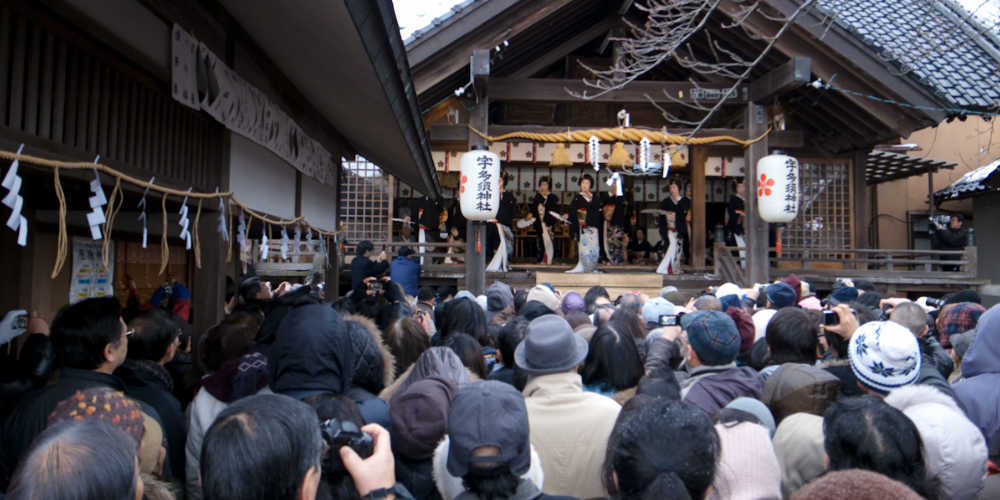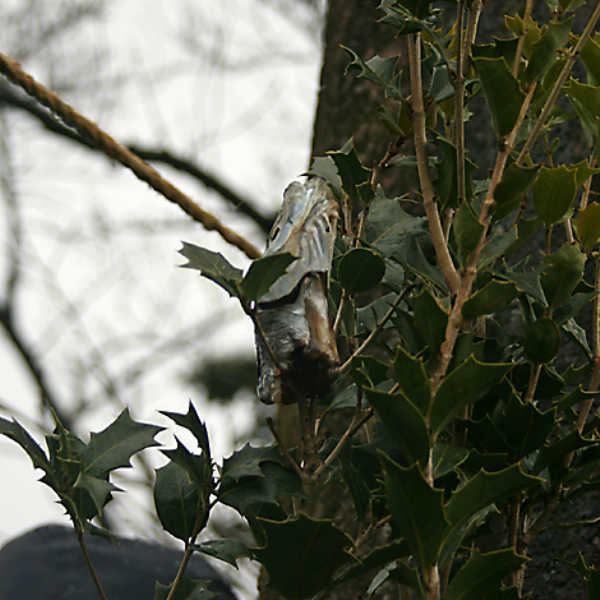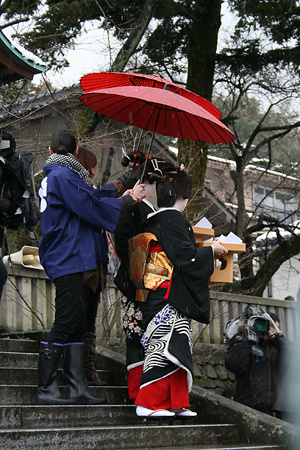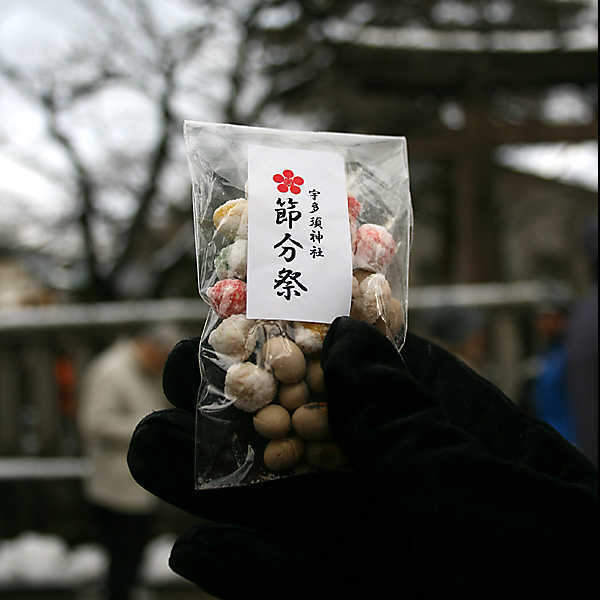Utasu-Jinja Setsubunsai

Shrine To Protect Against Evil
In 1599, this shrine "secretly" deified the spirit of the first Maeda lord. Located north east of Kanazawa castle, an ominous direction according to Onmyodo mysticism, they enshrined his spirit here to protect the family from evil. The hold object housed here was later transferred to Oyama-Jinja shrine in 1873. Utasu-Jinja is now famous as one of five great shrines in Kanazawa.
Coco SHIZUO, Artex Inc.; Updated June 1, 2018

Mame-Maki
And Setsubun-Sai
Japan has four seasons with a special word to denote the beginning of each: Risshun (Lichun / Feb 4-5), Rikka (Lixia / May 5-6) , Risshu (Liqiu / Aug 7-8) and Ritto (Lidong / Nov 7-8). Setsubun is the festival that occurs the day before a season officially starts. After the Edo period, it came to be connected with the day before spring. People celebrate Setsubun by throwing beans, called Mame-Maki, to dispel bad luck. As kids we would throw dried soybeans indoors as we yelled, “oni-wa-soto!” which means “out with the demon!” or “Fuku-wa-uchi!” means “in with fortune!”
There is a gorgeous Setsubun festival every year in the Higashi Chaya district’s Utasu-Jinja shrine where you can see them make fresh rice cakes and sweets, and sample sake. But the real stars of the festival are the Geisha!
I remember my last Setsubun.
At last, the Geisha appeared to perform an elegant dance. Their folding fans were like butterflies! Every single movement was beautifully choreographed.


The audience crowded in with their cameras, attempting to catch their movement in flight. If I was taller, then I could have stood over the
crowd and snapped some better pictures. Next year I’m bringing a step ladder!
Finally, they throw holy beans! Geisha came down the stairs holding beans, attended by a maid with a red umbrella. They were getting closer, and closer. The highlight of the festival was here! They began to languidly toss the beans into the crowd. It’s a life or death struggle against the wall of bodies, all pushing forward to grab the beans. Some greedy people take more than their fair share. Don’t follow their example! The Gods are watching you! I could care less about counting beans, I was there to photograph the beautiful Geisha, who were clad in a special black Kimono for this spiritual event. It was a once in a lifetime experience.
Place: Utasu-Jinja Shrine (1-30-8, Higashiyama, Kanazawa)
Date: February 3
Contents
13:00 Serving Japanese sake
14:00 Setsubun-Sai ceremony
14:30 Geisha performance
14:40 Maem-Maki (throwing holy beans)
Kanazawa Area
Kenrokuenn Garden
Following Matsuo Bashô’s steps in Ishikawa - 1/6 [Introduction]
Following Matsuo Bashô’s steps in Ishikawa - 2/6 [Kanazawa]
Noto Area
Mitsukejima Island
Kaga Area
Following Matsuo Bashô’s steps in Ishikawa - 3/6 [Komatsu City]
Following Matsuo Bashô’s steps in Ishikawa - 4/6 [Natadera Temple]
Following Matsuo Bashô’s steps in Ishikawa - 5/6 [Yamanaka Onsen Town]
Following Matsuo Bashô’s steps in Ishikawa - 6/6 [Daishoji District]
Rosanjin in Yamashiro Onsen Town
Stroll Kanazawa in Rental Kimono - 1/2 [Kimono Rental]
Stroll Kanazawa in Rental Kimono - 2/2 [Kimono Stroll]
January
Enyukai: Geisha Party
February
Setsubun-Sai Festival
AUGUST
Issaki Hoh-Toh Matsuri
November
Enyukai: Geisha Party
